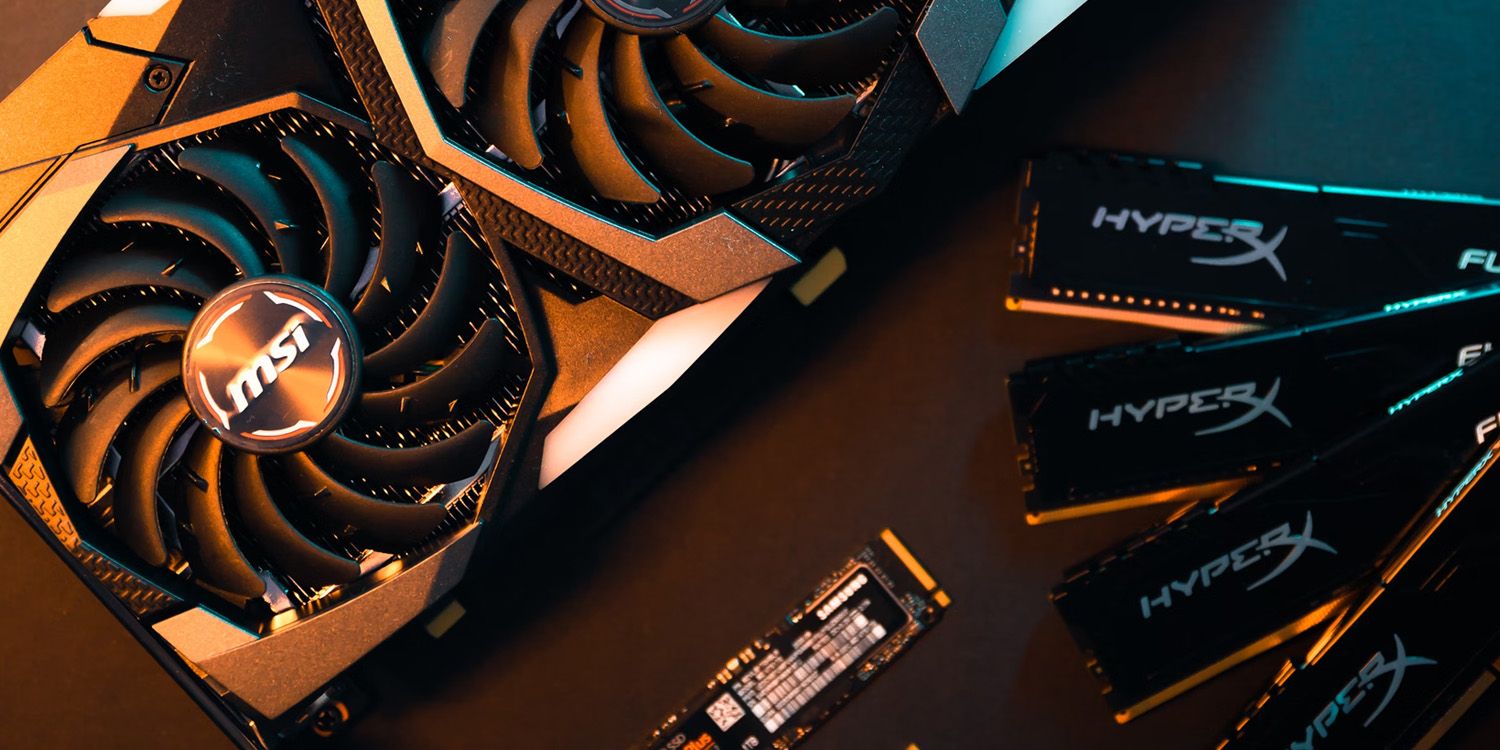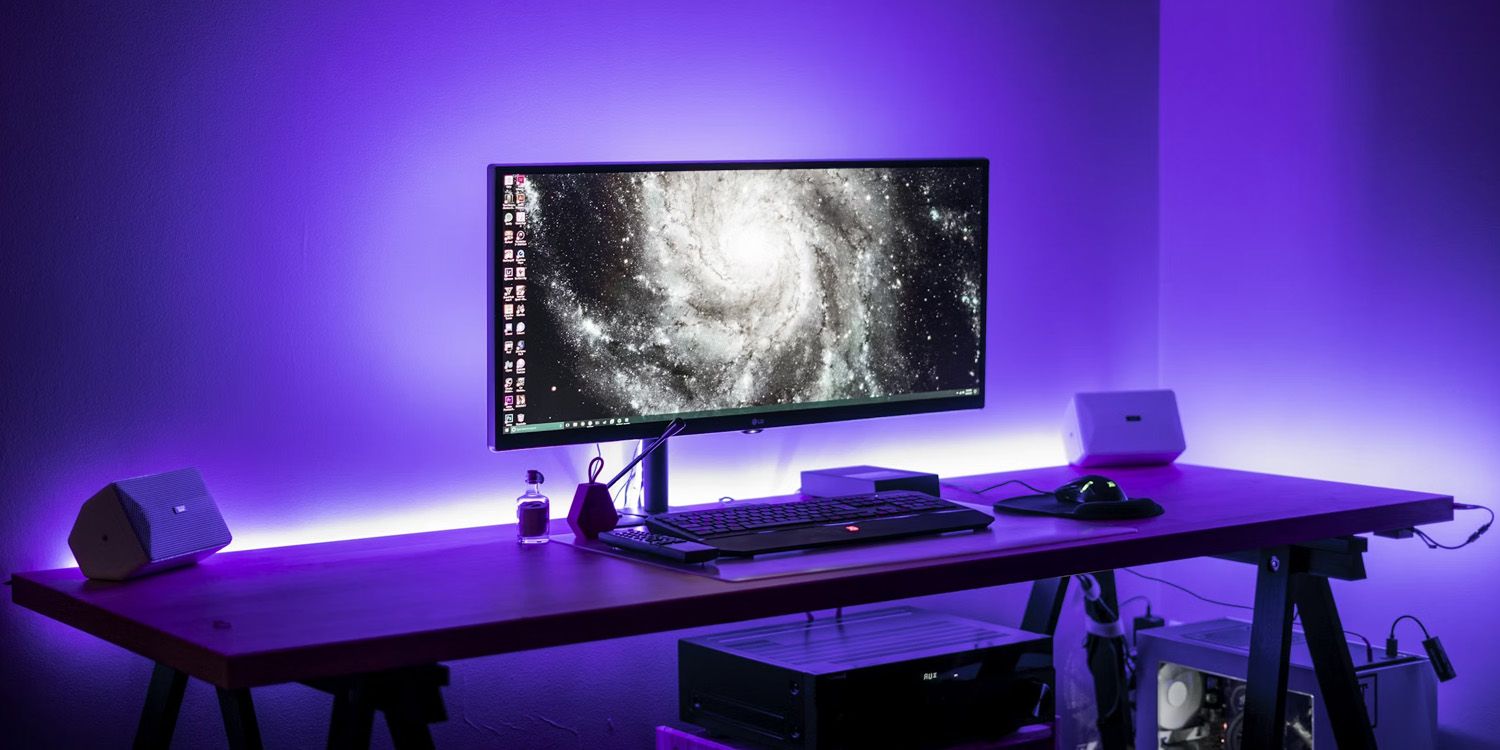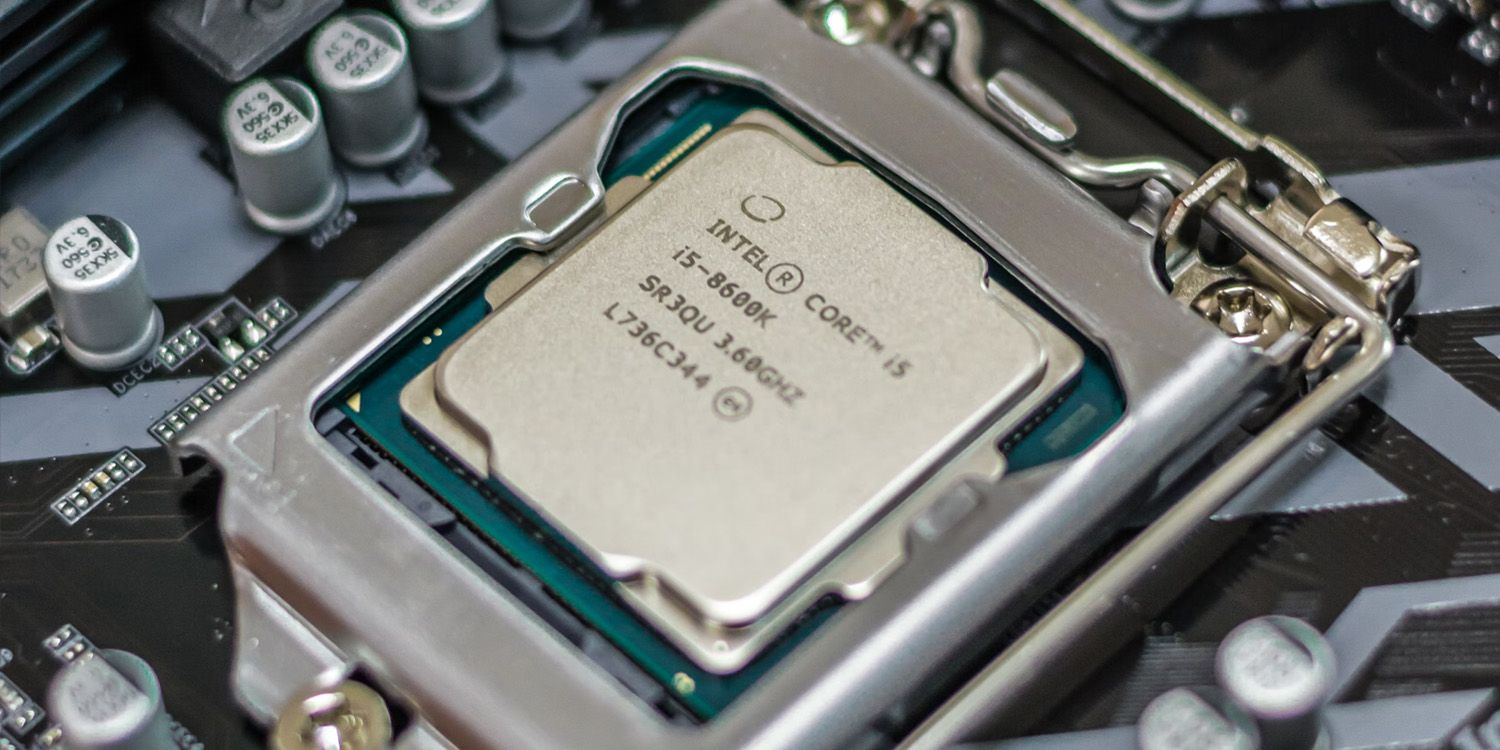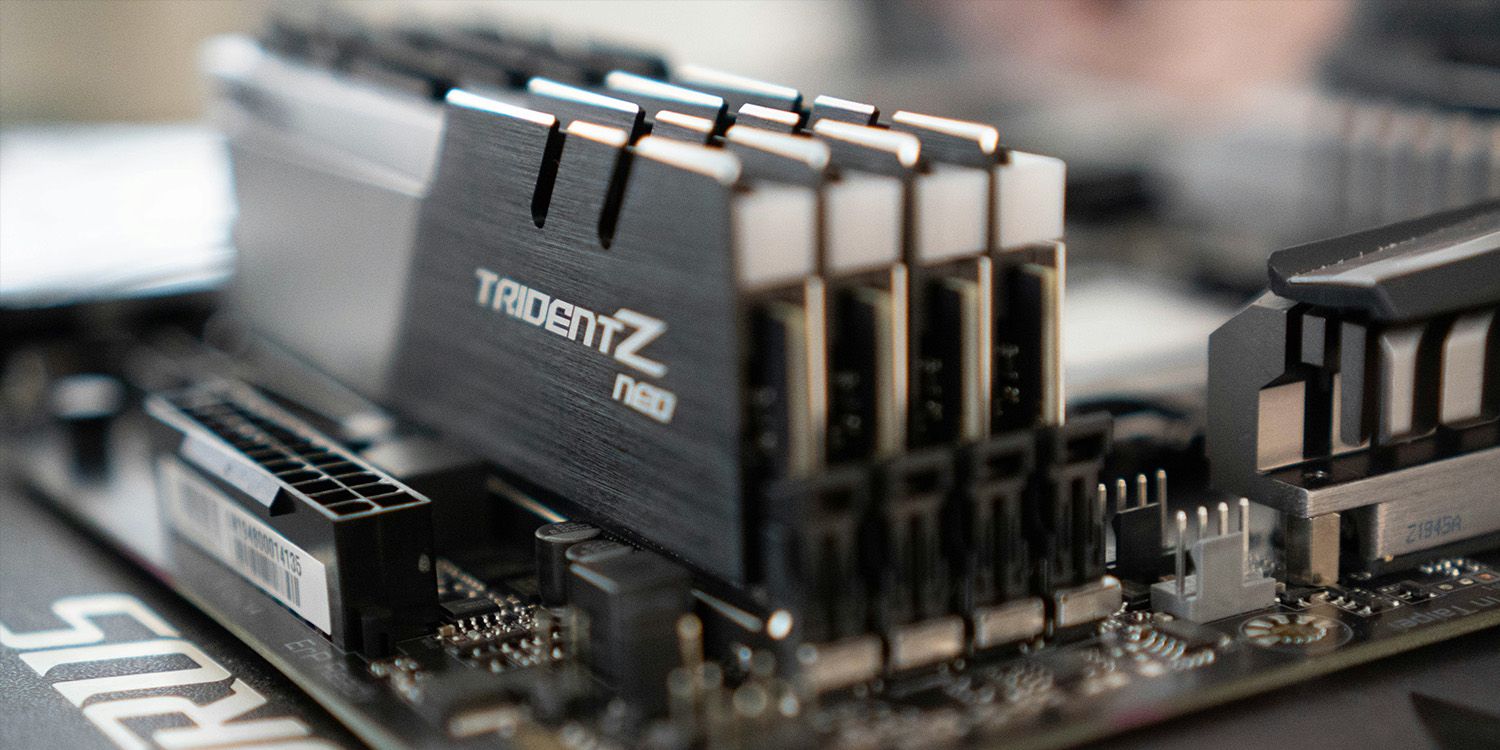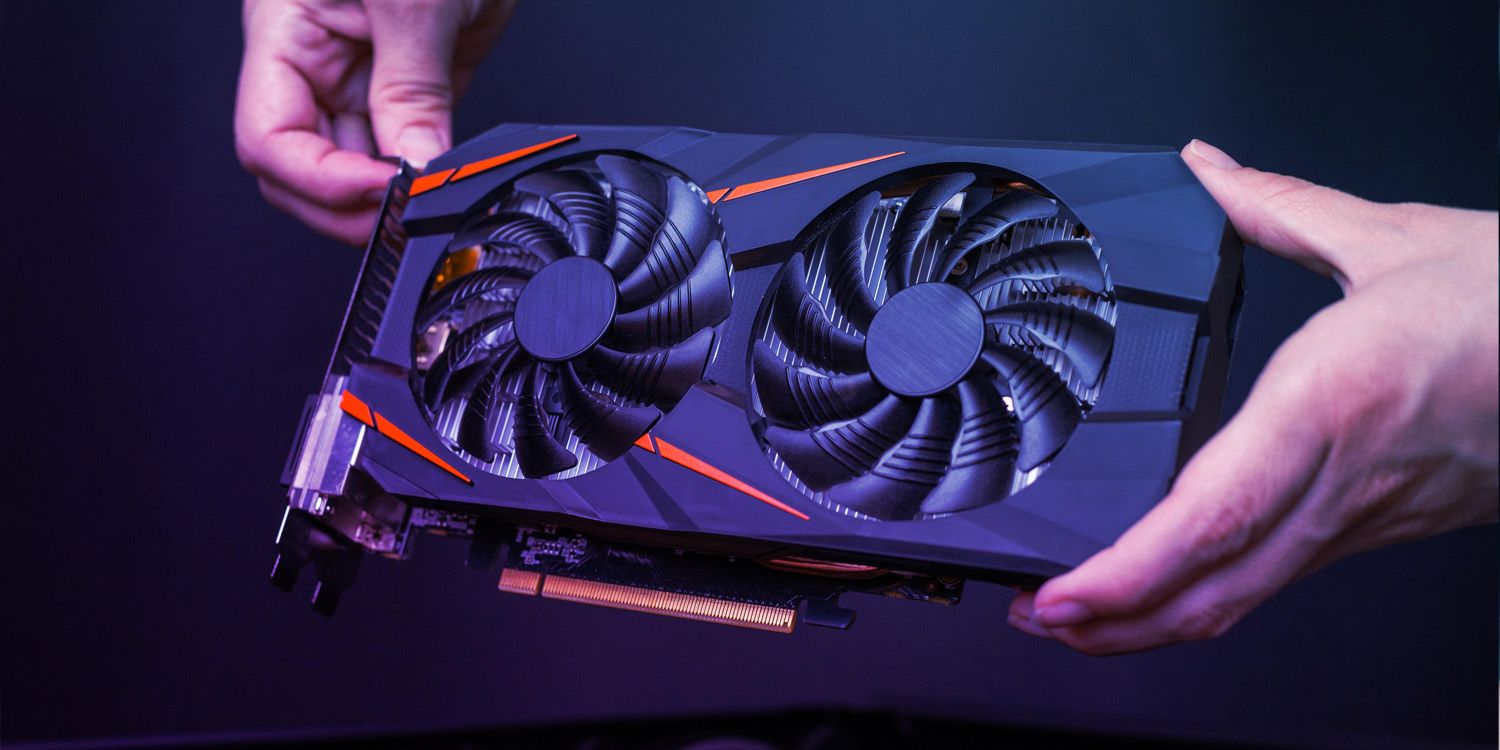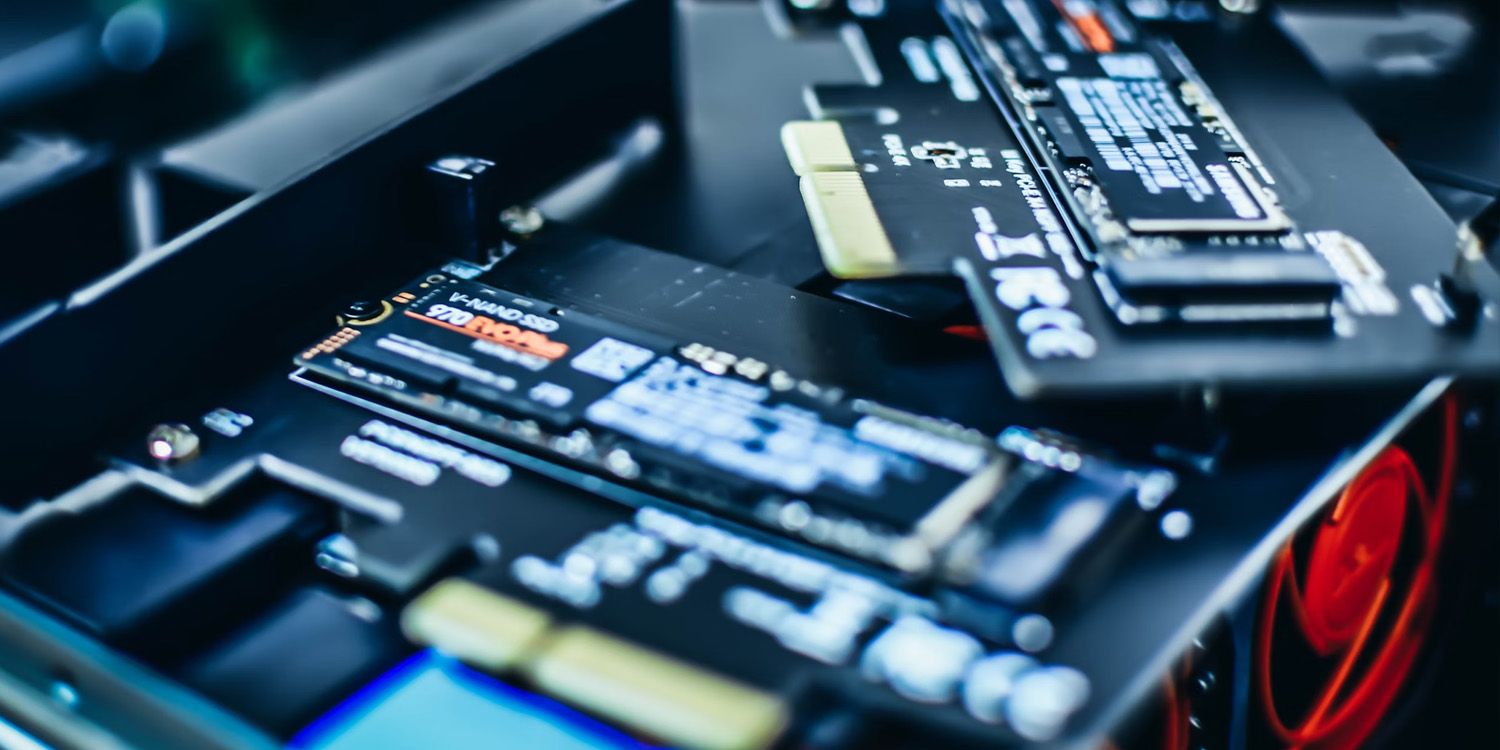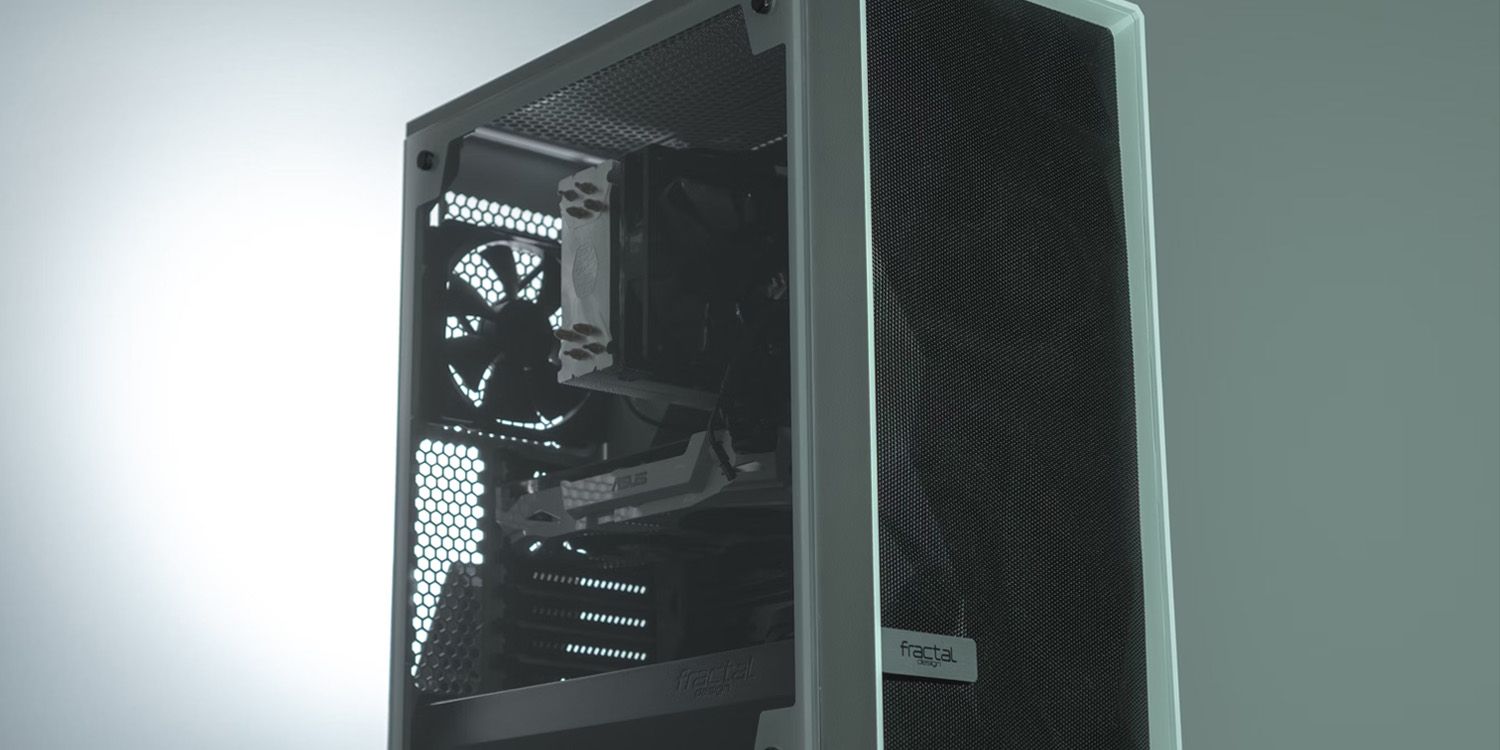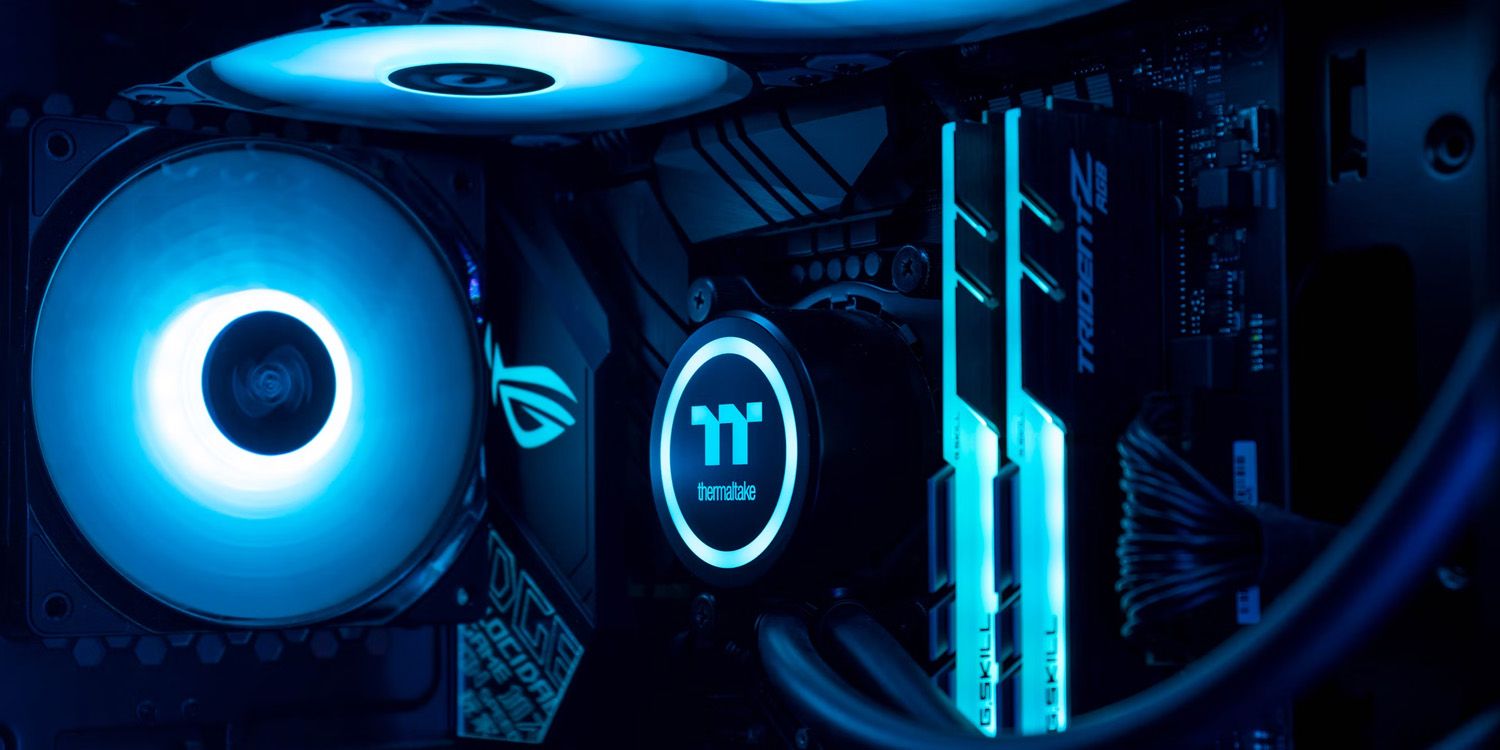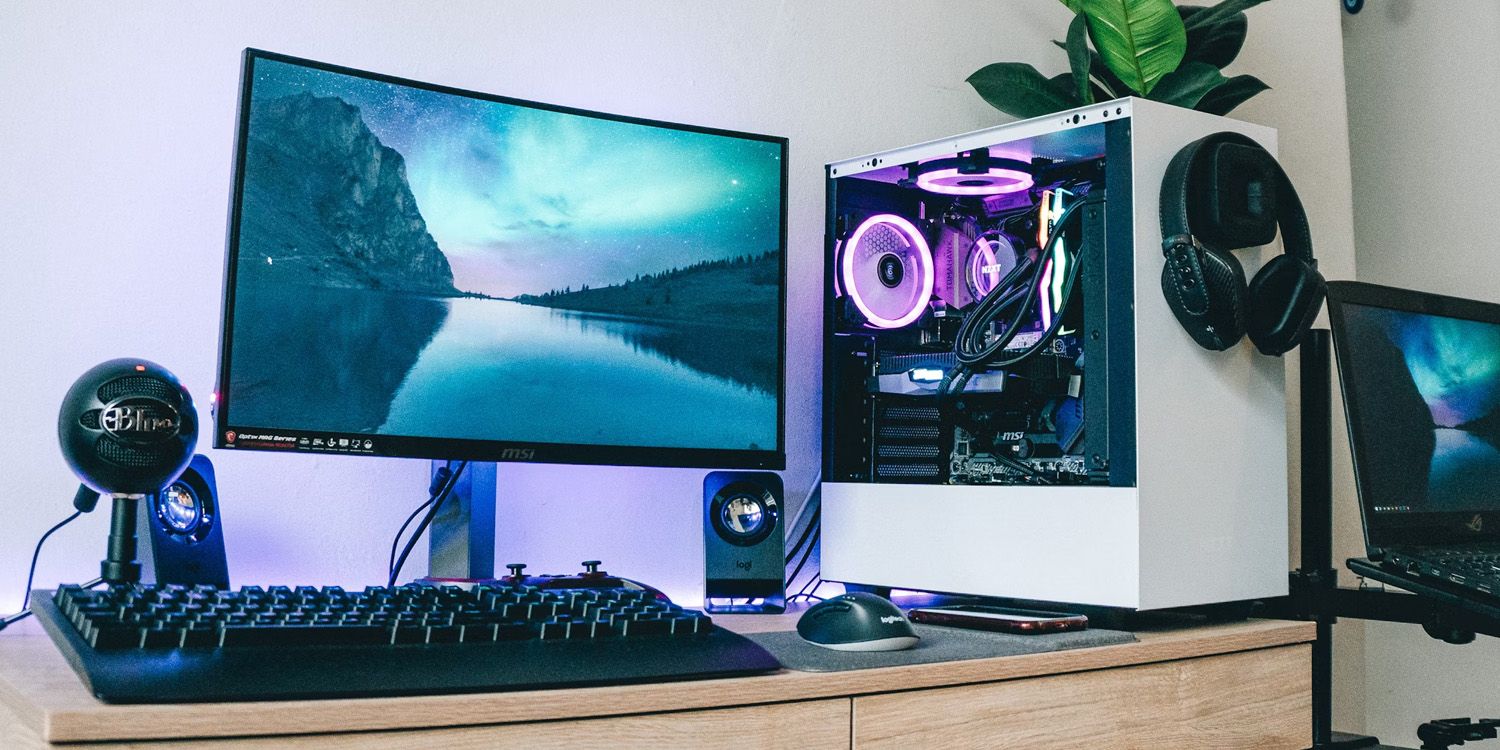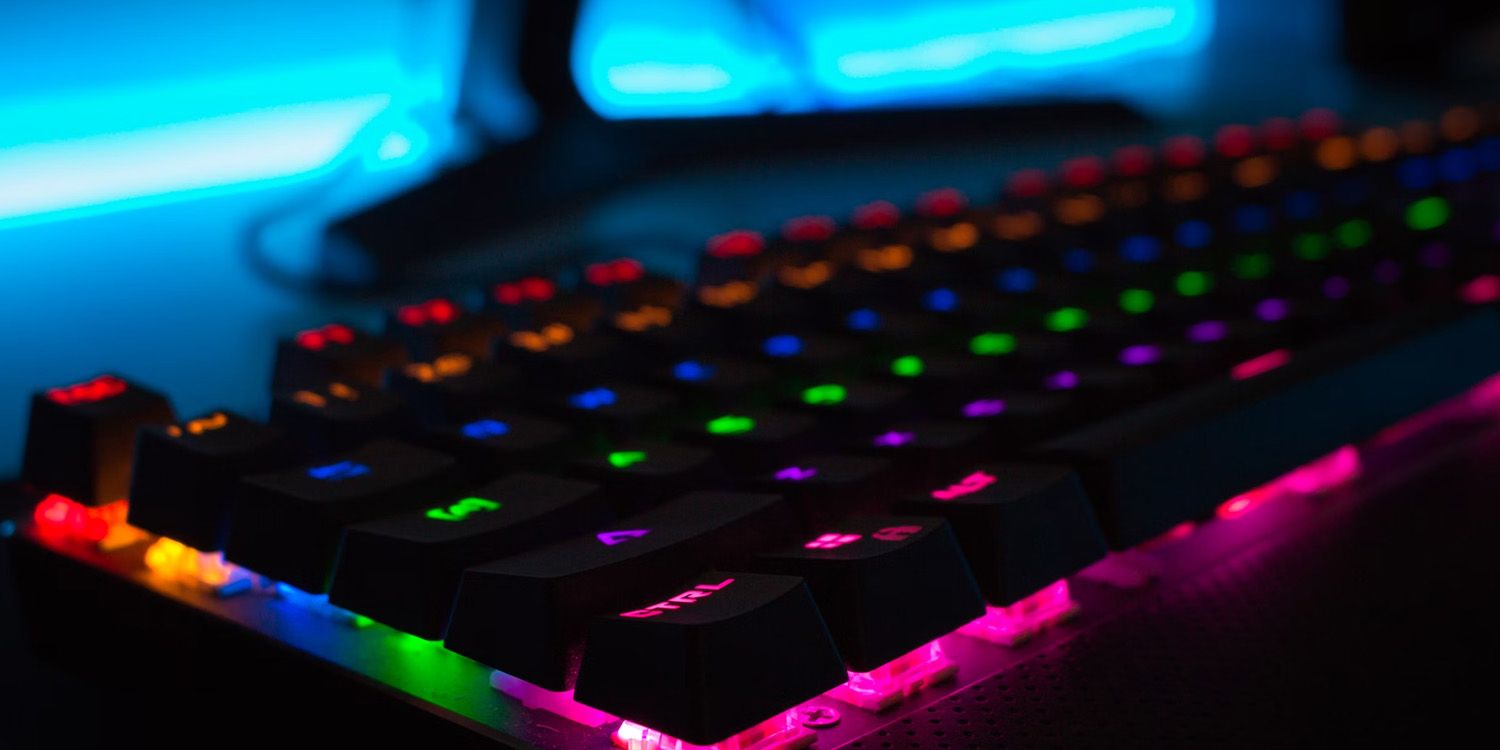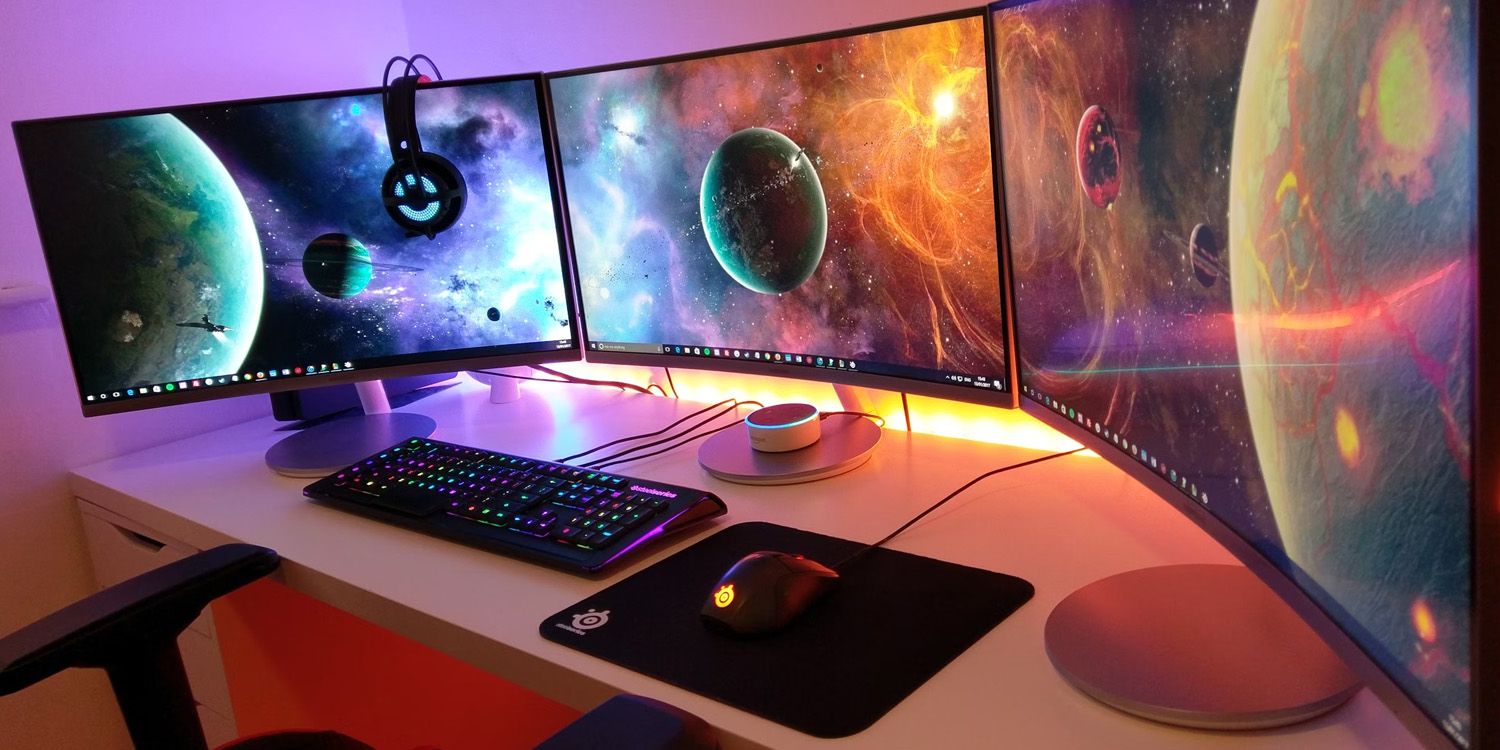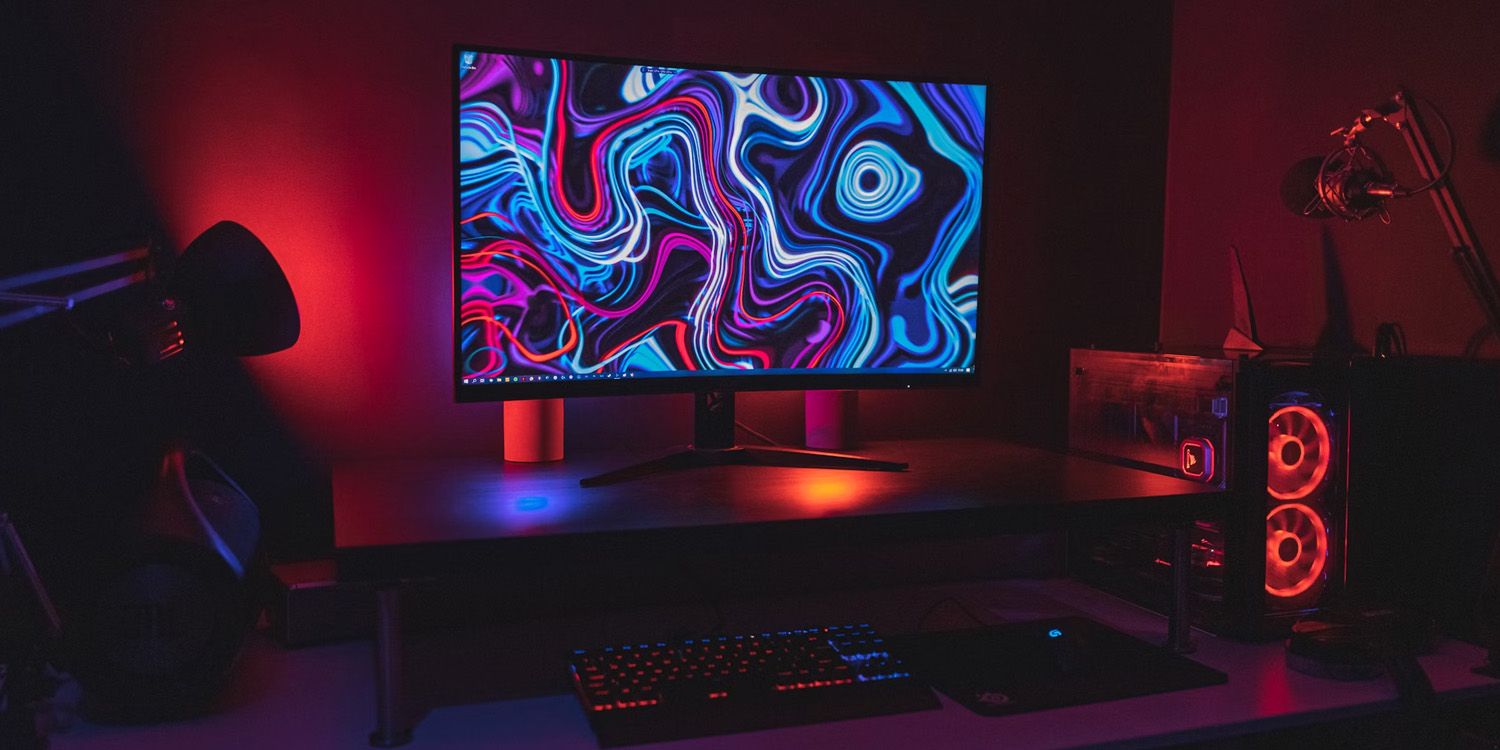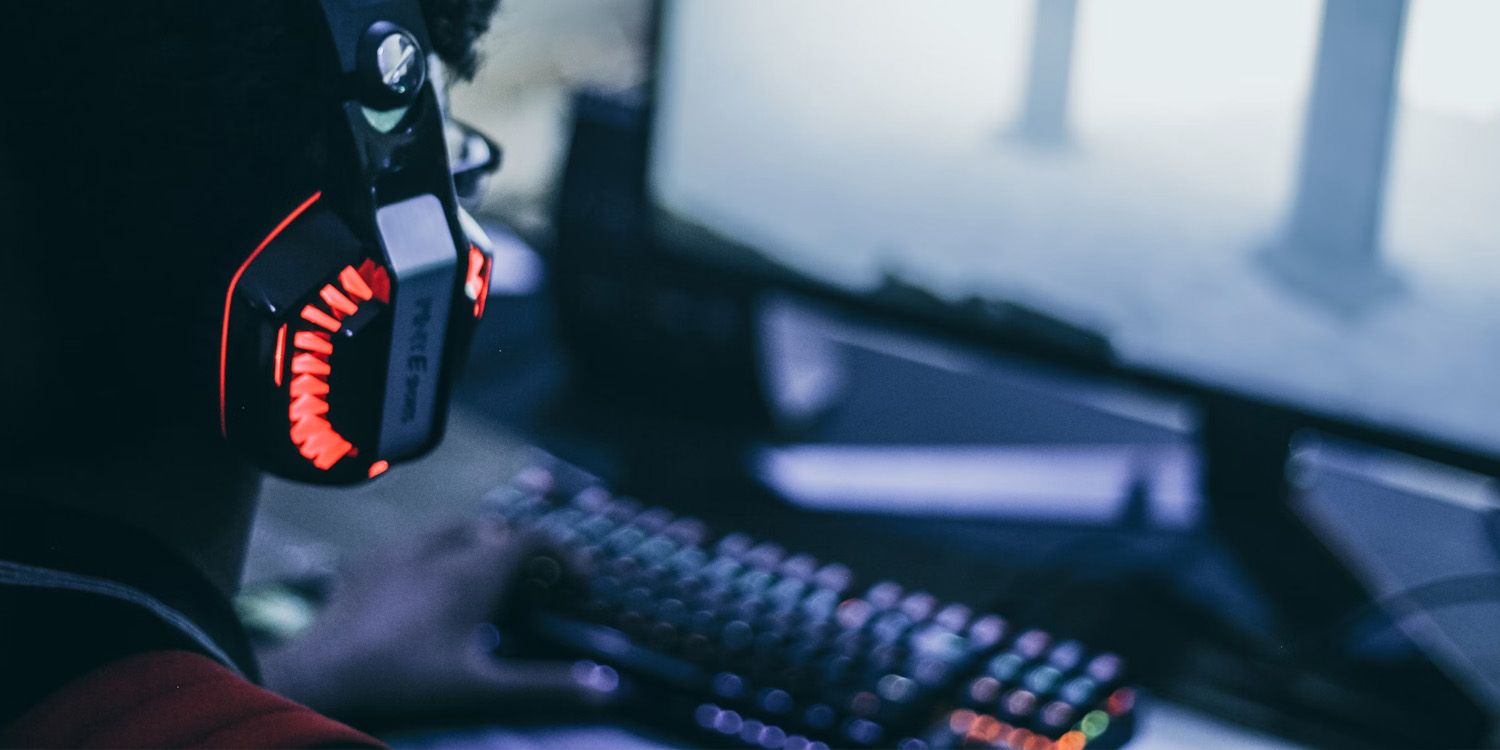Finding and building a powerful gaming PC that perfectly suits personal preferences can really help level up anyone's gaming experience, increasing the overall quality of immersion, gameplay, and latency. Although choosing a PC based on components is a bit of a challenge in its own right, there are several other specifics gamers need to keep in mind. A PC combined with the right peripherals will result in a much more complete setup, such as a good headset, keyboard and mouse, and monitor.
Although choosing the right elements to set up a gaming PC and its dedicated room may seem daunting, Game ZXC is here to make the process more streamlined, with several easy-to-follow steps.

The Best Gaming Desks in 2024
Anyone looking for a new gaming desk this year will want to make sure to check out this list!
How to Create the Best Gaming PC Build for Any Gaming Room
Finding the perfect gaming PC build and the right peripherals is vital for any serious gamer. Luckily, the process of choosing the right gaming PC can be broken down into several key considerations:
- Defining Personal Needs and Budget
- Consider The Dedicated Space
- Choosing The Right Components
- Choosing RAM
- Choosing A GPU
- Choosing Storage
- Choosing A Case
- Consider the Cooling System
- Choosing an OS
- Choosing Peripherals
- Choosing The Monitor
- Style & Aesthetics
- Set Up and Test the Equipment in the Gaming Room
Remember that the accessories and components can significantly impact the gaming experience just as much as the PC itself. If it's within the budget, opt for products that provide high-quality sound, visuals, and performance to provide the most immersion. Additionally, choosing products that provide optimal comfort and style can help players truly enjoy their dedicated gaming space.
Step One: Defining Personal Needs and Budget
The first step towards buying a gaming PC for a gaming room is setting a realistic budget and knowing the needed or preferred specs for the machine. The budget should be realistic and accommodate all the requirements including: hardware components, speed, graphical settings, resolution, and style.
Ultimately, the end result boils down to what a gamer needs and what they are willing to pay. A gamer with a higher budget will likely have access to some of the latest high-end tech, whereas a price-conscious gamer may have more limited options. Regardless of the amount you're willing to invest, there are a plethora of options available for you to ensure the best possible gaming experience within your dedicated budget.
Step Two: Consider The Dedicated Space
When building a gaming PC, first consider the ideal space and what it will look like. Although some gamers may have extra room that can be dedicated just to gaming, that's not always the case. It is important to consider the room the gaming PC will be located in and the surrounding space.
Here are some examples of the best possible things to consider:
- Room Size and Shape: Gamers who have a small room or limited desk space should opt for a slim or compact PC that can easily fit in small spaces, such as on a shelf, behind the monitor, or under the desk. These cases require much smaller components, like SFF cases, mini-ITX motherboards, and careful consideration of all components and their sizes. Alternatively, those with a larger room can choose between a plethora of options. However, mid-tower and full tower PC cases are ideal for large spaces, as they can easily become the center of attention. Choosing stylish elements like tempered glass, a unique case shape or color all help contribute to creating a sense of cohesion in the space.
- Room Style and Color: Another aspect to keep in mind when building a gaming PC for any room is the color and style of the room. If the room is monochrome or neutral, choose a gaming PC build that is also monochrome, or has a neutral color like silver, gray, or black. Also, consider adding some fans or RGB lighting to create some interest and contrast in the room. If the room is colorful and vibrant, opt for PC components and cases that stand out in the space.
- Room Lighting: If the room is dark and less ventilated, choose a brightly-colored gaming PC such as white, yellow, or purple to create some illumination. Also, choose bright-colored parts such as white or yellow graphics cards or a purple cooler. Go for more powerful fans and coolers to counter the ventilation issues in the room.
- Room Furniture and Accessories: Gamers should go for a gaming PC case that matches the accessories and furniture of the room. For instance, if there is a table or desk in the room, choose a PC case that complements the shape and size of the table or desk. If there’s a couch or chair in the room, pick a case that complements the ergonomics and comfort of the chair or couch, such as a PC with a mount, stand, or handle.

Best Ergonomic Gaming Chairs in 2024
The best ergonomic gaming chairs can bring a finishing touch to a new PC gaming rig while preventing chronic neck and back pain.
Step Three: Choosing The Right Components
Acting as the "brains" behind any PC, the CPU is responsible for executing the instructions needed for programs to run. CPUs vary in performance and price based on the speeds they offer and how well they handle multitasking. The CPU effectively affects every facet of a PC, including streaming, gaming, content creation, and editing.
A good CPU for gaming should have a high Max Turbo Frequency that significantly impacts performance. It should also feature more threads and cores to allow players to do more at once, thus keeping the system smooth and functional. Gamers who are mainly interested in a high-end gaming performance CPU should opt for industry-leading processors such as the AMD Ryzen 9 7950X3D or the Intel Core i9-14900KF. Alternatively, users looking for a decent quality, mid-range processor should instead opt for an AMD Ryzen 5 CPU, or an Intel Core i5.
Finally, it's important to remember that the choice of CPU affects the motherboard type as compatible chip sockets vary across all motherboards. Generally, it's best to decide on the CPU first, and then pick the best corresponding motherboard and RAM.
Step Four: Choosing RAM
When first deciding on the right RAM for the build, it is important to consider a RAM kit that is compatible with the chosen motherboard. Generally, there are a few versions of RAM that are considered standard today. DDR5, DDR4 and occasionally DDR3 are among the most common. As stated previously, the user must verify and choose the right RAM that is compatible with both the chosen motherboard and CPU socket.
Although DDR5 offers the fastest speeds and the latest technology, it physically cannot fit into a motherboard that only supports DDR4 or DDR3. Likewise, most motherboards have a limit on the number of RAM modules (individual sticks) as well as their density. Users with better RAM will see an increase in speed and boosted performance.
That being said, 8 GB of RAM is considered relatively standard for general PC gaming. Although 16 GB of RAM is more ideal, anything more than that is better suited to content creators who utilize a lot of memory-heavy programs.
Step Five: Choosing A GPU
The Graphics Card is one of the most critical components of any gaming PC, as the GPU chosen directly affects the quality and visual fidelity of the many games a PC can run.
Although many are led to believe that the only option for a gaming PC's GPU lies in the best possible RTX 4090, this isn't completely true. Rather than shelling out the entire budget to purchase a $2,000 GPU, users on a budget can opt for an affordable mid-range option that is balanced with powerful components to make the most out of a system's performance. When shopping for a GPU, focus first on the amount of VRAM, as well as some of the latest AI-Upscaling technology to offer the best performance and value.

The Best Graphics Cards for Gaming in 2024
NVIDIA, AMD, and Intel now have graphics cards on the market, but which is the best? Let's benchmark and compare their offerings.
Step Six: Choosing Storage
Most PCs use Solid State Drives (SSDs) or hard disk drives (HDD) for storage. With a suitable hard drive, the gaming PC will be able to read files more quickly and improve performance regardless of the room. The best hard drive should also be compatible and offer high performance to ensure gamers enjoy a smooth gaming experience. For more in depth information about Sold State Drives, check out Game ZXC's list of the Best SSDs for Gaming in 2024.
Step Seven: Choosing A Case
Options for PC cases are plentiful, offering a variety of shapes, colors, and styles. In the end, the case that is chosen defines the system as a whole. Although PC cases vary dramatically, they can be broken down into several simple categories that depend on the motherboard size: Full Tower,Mid-Tower, and SFF (Small Form Factor.)
Gamers should decide on a case that not only suits their personal preferences but also meshes well with their environment; offering enough space and ventilation depending on circumstances.
Step Eight: Consider the Cooling System
Not all gaming PCs are created equal; high-quality units tend to draw more power than their more affordable counterparts. This means they'll need a more efficient cooling system, such as a liquid cooling system, to allow them to run at higher capacities for longer.
A good example is the ASUS ROG Ryujin II 360 ARGB CPU Cooler. The powerful liquid cooler features Noctua fans in the non-ARGB version plus Asus's own ROG AF 12S ARGB fans. It is designed to handle even the fastest Intel and AMD while keeping them incredibly cool in any gaming room.
Step Nine: Choosing an OS
Once the gaming PC is ready, you'll need to install an operating system (OS). This can be done via a flash disk or downloaded and installed. What's required is to plug in the mouse, monitor, and keyboard, and the USB flash drive that contains the OS. Windows is one of the best for gaming operating systems as it is compatible with most software and gaming hardware and has an extensive game library. Others include Linux, AtlasOS and Pop_OS.
Step Ten: Choosing Peripherals
Once the specifications for the PC build have been chosen, users will also need to factor in the cost of peripherals. Although there are many accessories available that can help make a gaming experience both fun and effortless, the most standard peripherals to get are as follows:
- Keyboard
- Mouse
- Mousepad
- Headset
- Mic
- Speakers
- Gaming Controller
Getting a keyboard and mouse combo is the most important peripheral to prioritize. Instead of picking a regular keyboard, a gamer should opt for a mechanical gaming keyboard which is much more responsive, especially for fast-paced games. Additionally, most gaming mice come with programmable buttons and offer superior speed, significantly enhancing response time, which is of the utmost importance when playing competitive first-person shooters.
Additionally, gamers should upgrade from using low-quality built-in speakers found in most displays by opting for either an immersive surround sound speaker setup or a high-quality gaming headset, which is perfect for online gaming.
Step Eleven: Choosing The Monitor
Since most gaming PCs don't include a monitor, gamers need to buy the right one for any gaming room. They should therefore research the best gaming monitors they can afford while trying not to focus so much on the cost. While most standard monitors will get the job done, a gaming one offers superior input lags and refresh rates, meaning players are unlikely to be faced with risks such as motion blur or an ugly-looking picture.
Here are some aspects that gamers should consider when choosing a gaming monitor for any room:
- Resolution: Higher resolutions provide sharper images. However, they require more powerful hardware to run seamlessly. Popular resolutions for gaming monitors include 4k, 1080p, and 1440p.
- G-Sync and FreeSync: FreeSync is compatible with AMD graphics cards, while G-Sync is compatible with Nvidia graphics cards.
- Refresh rate: Higher refresh rates mean less motion blur and smoother motion. 144Hz or higher is ideal for most gaming rooms.
- Response time: Gamers should go for a response time of 1ms or less if possible.
- Panel type: Most gaming monitors come with TN, IPS, or VA panels. TN panels offer the fastest response times, although the viewing angles and color accuracy are not the best. On the other hand, IPS panels feature slower response times, but offer the best viewing angles and color accuracy. VA panels have worse color accuracy and response times, but the best contrast ratios.
Step Twelve: Style & Aesthetics
Once the hardware has been decided, it's important to finalize the build by focusing on the aesthetics. Adding RGB lighting across the room or within the gaming PC can add a pop of color, as well as a cool technological feel.
Finally, choosing a theme for the room, as well as for the PC build, is a great way to add a touch of personalization to the space.
Step Thirteen: Set Up and Test the Equipment in the Gaming Room
After picking the best PC, putting them together and testing is essential. Follow all the requirements and make sure all the components are functioning well. Gamers must also download the necessary software and drivers and test their performance while playing.
Since the test is much more difficult to perform, it’s very important to ensure everything is installed well. Once the GPU is installed, connecting it to the power supply is quite imperative for it to start working. The power supply should be connected to the motherboard, plugged in, and turned on for it to provide everything needed for gaming.
What Does It Cost To Maintain A Gaming PC?
Like any other machine, the best gaming PC needs regular care and maintenance to remain in the same condition and function well. Since dust buildup can lead to overheating and eventual failure, it's essential to keep it clean by blowing the dust occasionally.
Repairing and replacing different components is vital once they become defective.
Should You Build or Buy A Gaming PC?
Many avid gamers prefer to build their gaming PC, something which is quite possible. However, with several electrical components involved, building a PC can be a bit complicated. For instance, things can get tricky when it comes to choosing the components that work together.
It therefore takes a bit of research to purchase all the correct parts from a retailer that can combine various components that work together. There's also the issue of the cost of the components. Building a gaming PC is typically considered the cheaper option, but more often than not it's simply the best value option, with users able to get newer individual components like RAM, graphics cards, and monitors for about the same price as a mid-range or even a budget gaming PC, rather than a high-end one.
Conclusion
Finding the best gaming PC for any room can help one have the best gaming experience. Alongside the budget, it's essential to pick one based on the requirements and the kind of games that can be played, as well as the room they will be playing in.
Related Products
-
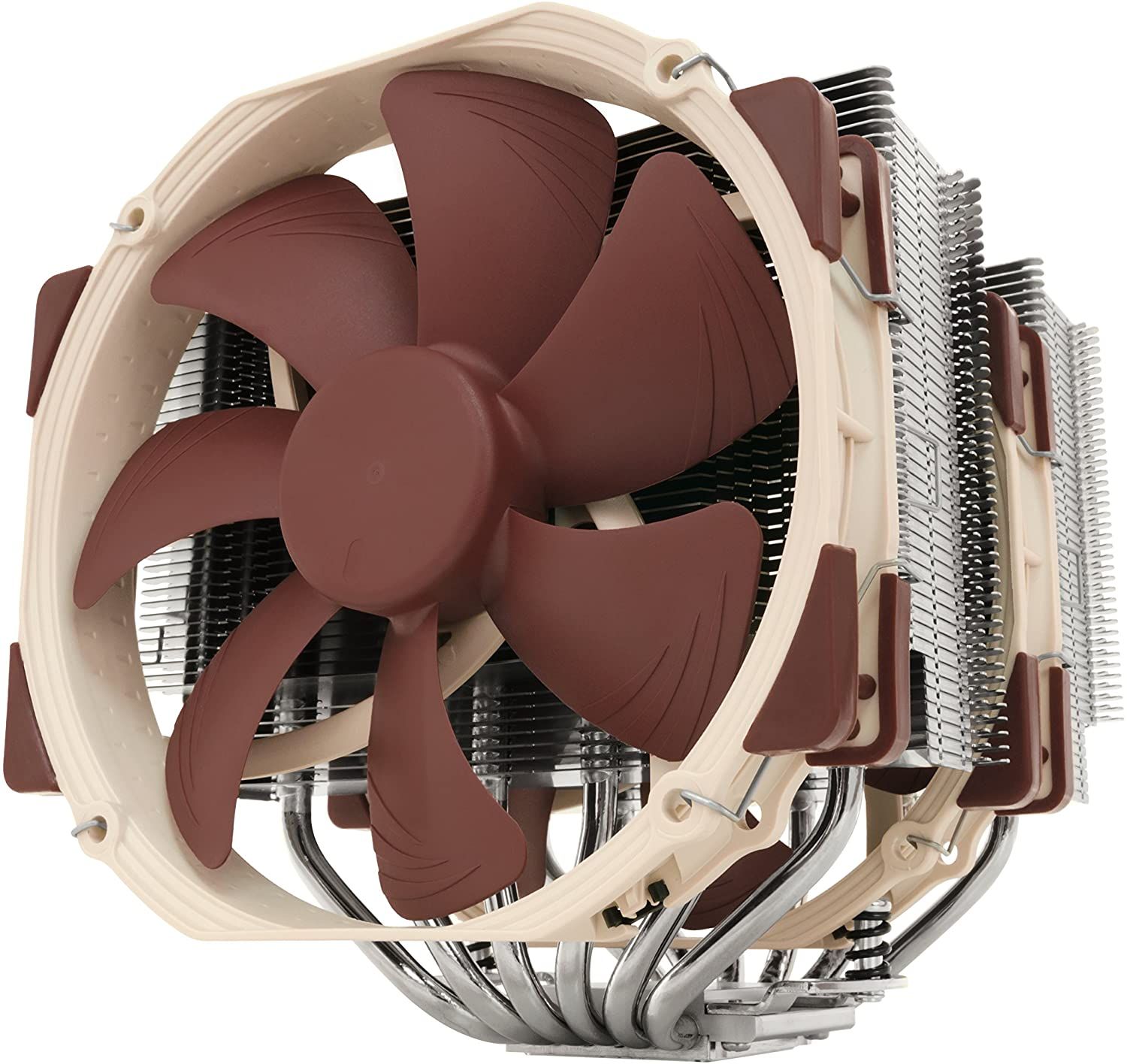
Noctua NH-D15 CPU Cooler
The Noctua NH-D15 CPU Cooler is all about maximizing CPU cooling and doing so with as little noise as possible. Using the bundled dual Noctua NF-A15 PWM fans and low-noise adapters, the NH-D15 is a capable air-based CPU cooler that has a no-frills, all-business approach to its job of cooling some of the beefiest CPUs available in the market, assisted by the bundled high-end NT-H1 thermal paste.
-
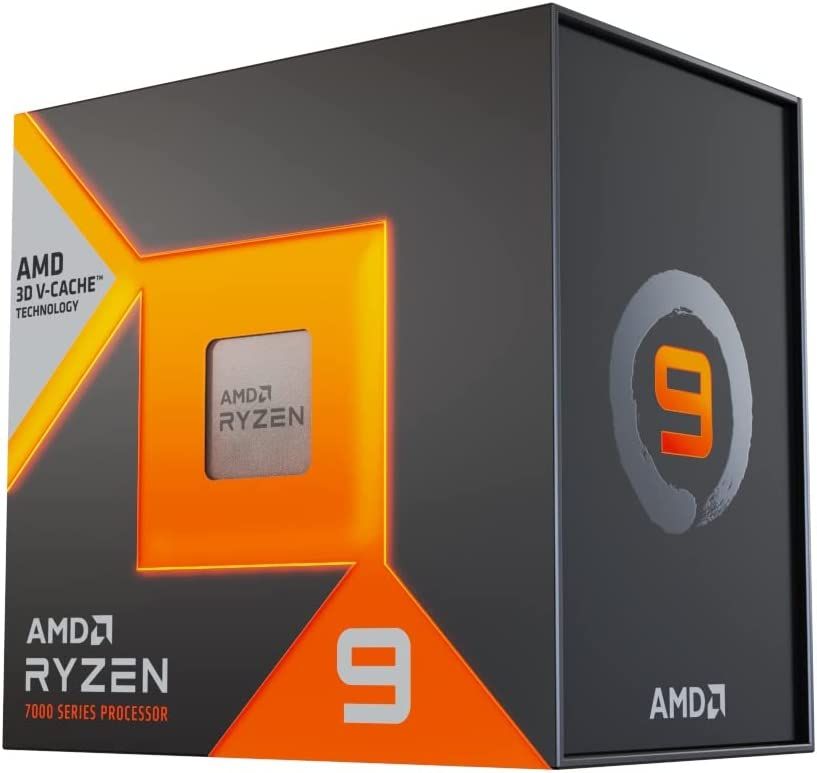
AMD Ryzen™ 9 7900X3D 12-Core, 24-Thread Desktop Processor
The AMD Ryzen™ 9 7900X3D 12-Core, 24-Thread Desktop Processor is the 12-core version of its X3D refresh across 3 of the Ryzen 7000 series processors that see it stack 3D V-Cache on one of the two 6-core CCUs in a bid to repeat the success that was the 5800X3D on a resurgent Ryzen 7000 lineup.
-
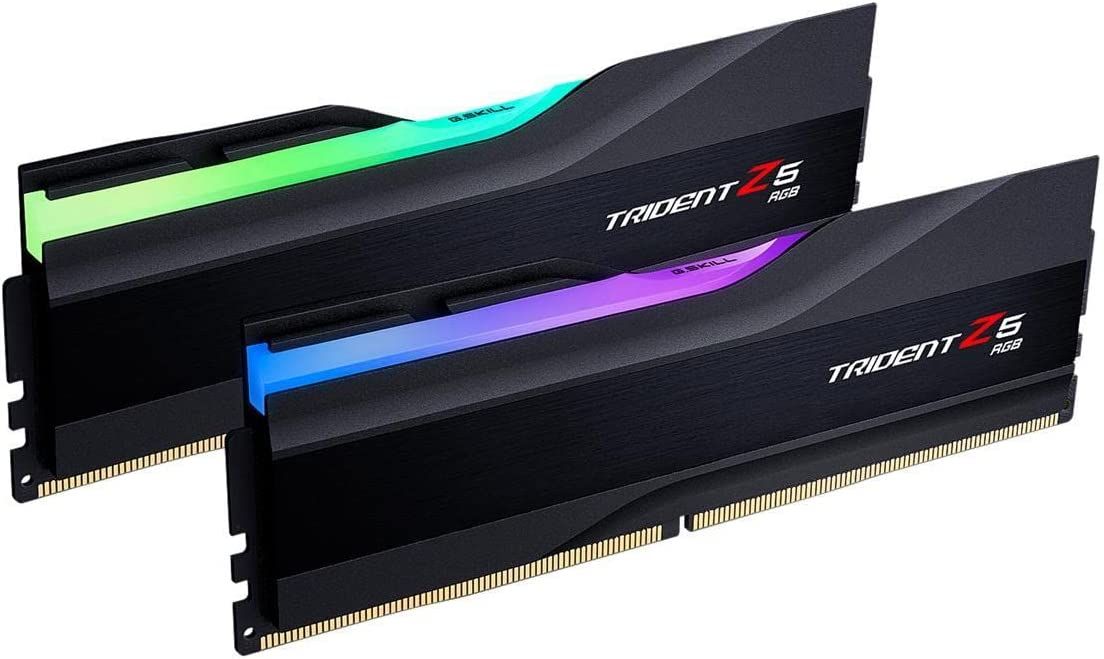
G.Skill Trident Z5 RGB Series 32G x 2 Kit (CL32)
$220 $250 Save $30The G.Skill Trident Z5 RGB Series 6400MHz 32G x 2 Kit (CL32) offers excellent low latency 6400MHz (XMP) clocks that are in line with most AMD and Intel Enthusiast motherboard overclocking standards while improving on the looks of some of the best RGB lighting money can buy while keeping it subtle overall.
-
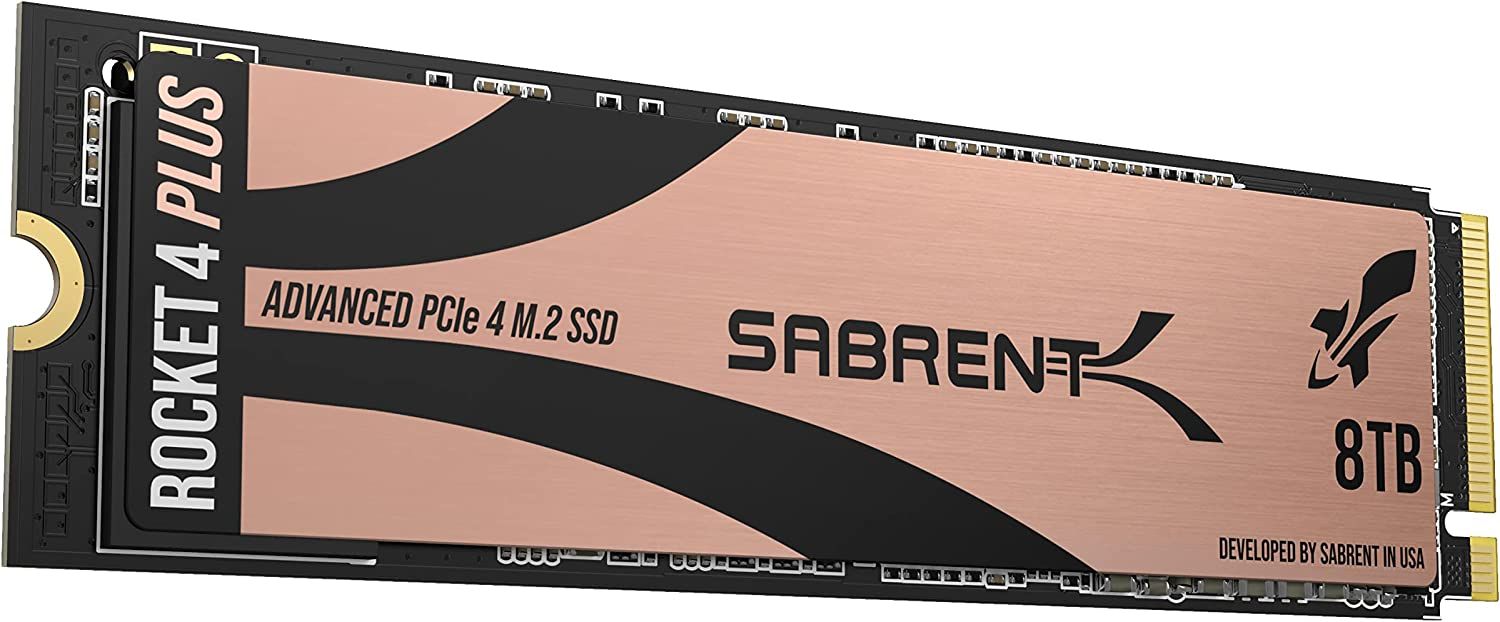 The Best High Capacity SSD For Gaming For Any Room
The Best High Capacity SSD For Gaming For Any RoomSabrent Rocket 4 Plus 8TB SSD
The Sabrent Rocket 4 Plus 8TB SSD is an SSD that mixes excellent peak PCI-E 4.0 storage speeds with some of the highest capacity money can buy on a single NVME SSD currently. The Rocket lineup by Sabrent has been synonymous with pushing limits and with 8TB of fast SSD storage, the Rocket 4 Plus is no different, offering a sub $0.12-0.13 cost per gigabyte to end users for as much as 8TB of storage on offer on a module that will fit almost any setup with ease.
-
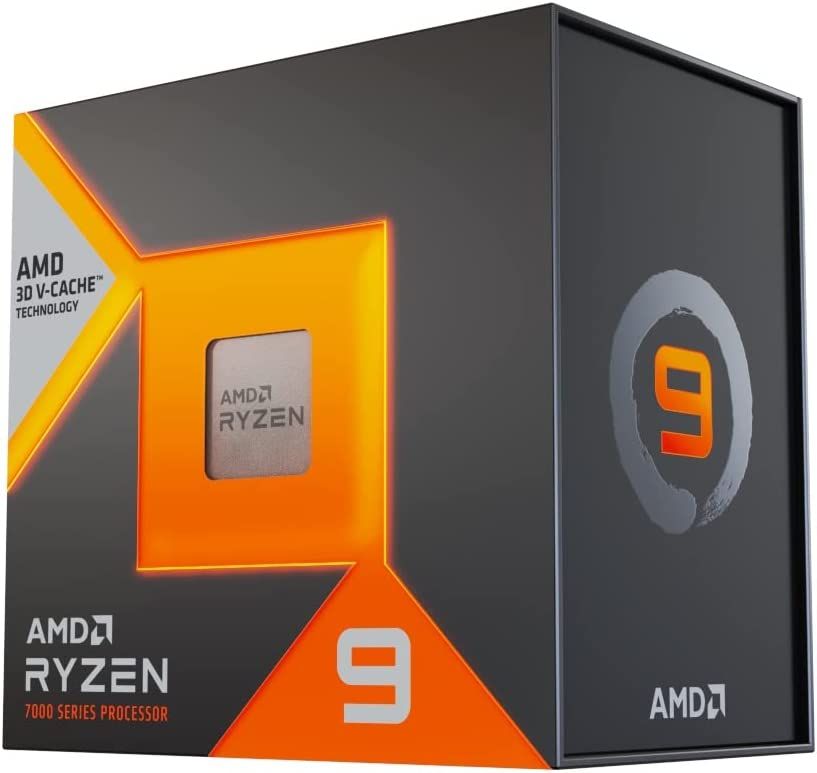
AMD Ryzen™ 9 7950X3D 16-Core, 32-Thread Desktop Processor
$649 $699 Save $50The 16-core, 32-thread desktop AMD Ryzen 9 7950X3D processor is AMD's answer to a resurgent Intel 13th generation processor lineup as it attempts to wrest back the gaming crown with the same technology that made the last generation 5800X3D such a powerful CPU.
With 128MB of L3 cache on offer, the Ryzen 9 7950X3D leverages its 3D V-Cache muscle in gaming as well as its powerful new Zen 4-based cores in productivity to make for a potent enthusiast-grade CPU in the offing.
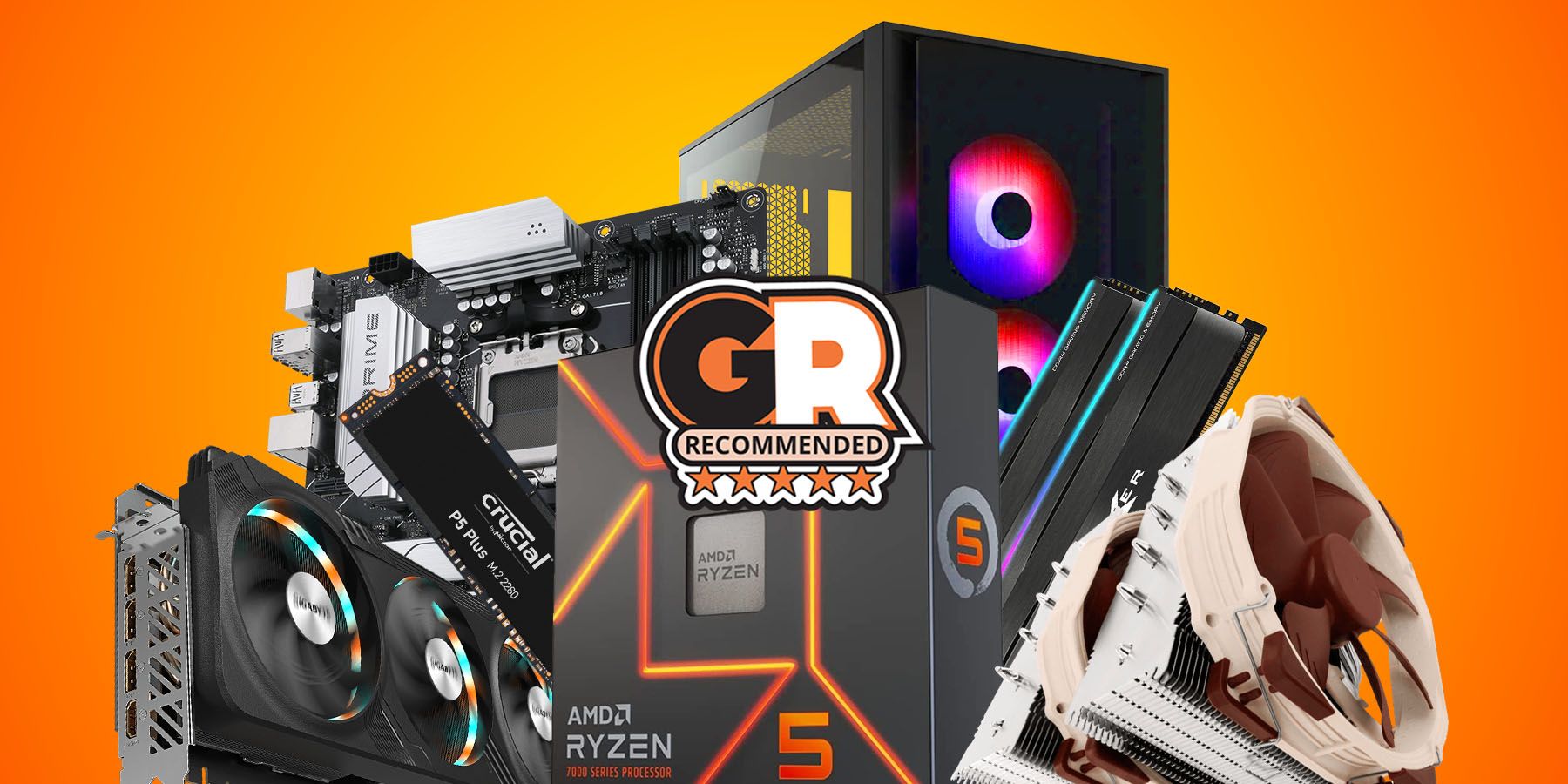
The Best Gaming PC Builds Under $2000
Need to build a PC on a budget? Here are the best builds you can make yourself for under $2000!
FAQ
Q: Do you need to buy a gaming PC?
Even though most gaming PCs cost a lot of money, the initial investment is justified by what the PC can offer compared to the console. For example, PCs can easily be improved by changing the components when needed. This means gamers have more control on what gaming hardware they are looking for, how they need to run their games and more options regarding compatibility. The most significant advantage of finding the best PC for the living room is that one can use it in several ways.
Q: Which is cheaper; buying or building a gaming PC?
While previously it was cheaper to build a PC from different components, the prices of some components such as graphic cards have increased, making it a bit challenging to create one. For example, building a full system piece by piece may require a lot of money that most gamers may need help to afford. While it may be cheaper to build a PC from scratch, this depends on the type of PC one wants and the GPU they intend to slot in their system. Going for a prebuilt rig could save most players in the long run.
Q: Do the best gaming PCs for any room boast high quality components?
Contrary to popular belief, not all gaming PCs are configured with high-end components. What ultimately sets them apart is their CPU and RAM storage capacity. This means even an older RTX 2070 and GTX 1660 Super can play some of the most demanding games.
Q: How can one optimize PC gaming for any room?
The best way to make a gaming PC more functional is to upgrade it. This involves improving the memory, replacing the drivers for big changes, and optimizing it without buying more hardware. Try ending cleaning up the startup, ending unnecessary programs in Task Manager, shutting down unnecessary items and shutdown items, and preventing overlocking. By doing this a gamer can improve the performance using the hardware they already have.
Q: How does one stop a gaming PC from overheating in any room?
One of the most important things is to check whether the fans are working. Check that the fans are working. It's also essential to improve the airflow for desktop PCs and avoid programs that use a lot of power. Moreover, cleaning the dust from your computer can significantly help prevent overheating.


